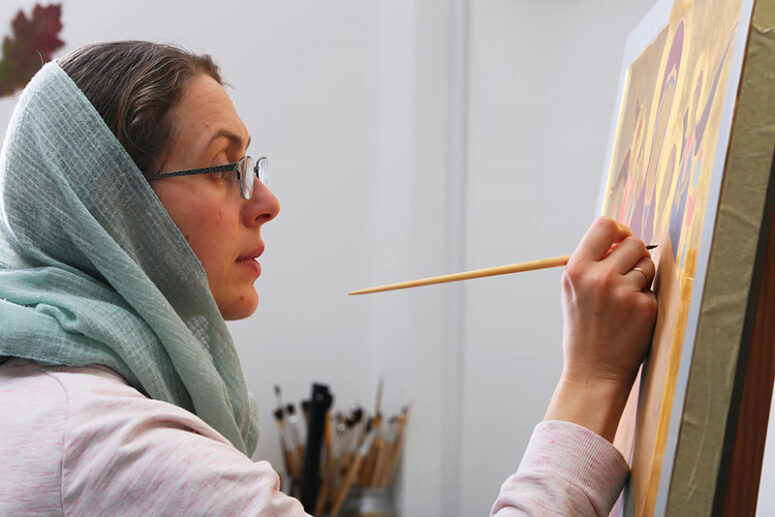
The icon-painting workshop of St Elisabeth Convent has existed for over 20 years. During this time it has become known far beyond the borders of Belarus. Today we receive orders from all over the world. Most often, we paint well-known icons, but sometimes we are asked to paint lesser-known images of the Mother of God, or “rare”, locally revered Christian saints from remote corners of the Orthodox world. Our icon painters are happy to accommodate such requests and take on any complex orders. Due to this, rare images with their unique stories and particularities are constantly added to our Catalogue. In this article, we are dwelling on several such icons of the Mother of God.
The Vatopedi “Joy” or “Consolation” Icon
This icon of the Mother of God is located in the Annunciation Church of the ancient Vatopedi Monastery on Mount Athos. A distinctive feature of the image is the face of the Theotokos, turned towards Her right shoulder, as she restrains the hand of the Child, held at Her mouth. According to the traditional account, the icon was miraculously transformed in 807.
Once, a gang of robbers landed on the shore in the night, crept to the walls of the Vatopedi monastery and waited for the gate to open in order to burst inside and pillage the monastery. After Matins, the brethren withdrew to their cells for a short rest, while the abbot stayed in the church. Suddenly, he heard a woman’s voice coming from the icon of the Mother of God. It was warning him of the danger threatening the monastery. The hegumen looked at the icon and was amazed at how the image of the Hodegetria had changed. The Divine Infant, previously depicted with a blessing gesture, suddenly raised His hand to close the lips of the Mother of God, and said, “No, My Mother, do not tell them this; let them be punished for their sins.” But the Mother of God, avoiding His hand, repeated twice, “Do not open the monastery gates today but get up on the walls and disperse the pirates”.
The amazed abbot gathered the brethren, showed them the changed image and conveyed to them the instructions of the Queen of Heaven. After a prayer of thanks, the monks successfully drove out the robbers.
Since then, this icon has been called “Joy” or “Consolation”. Although the face of the Divine Infant appears strict on the image, the merciful gaze of the Mother of God expresses immeasurable love and consolation.
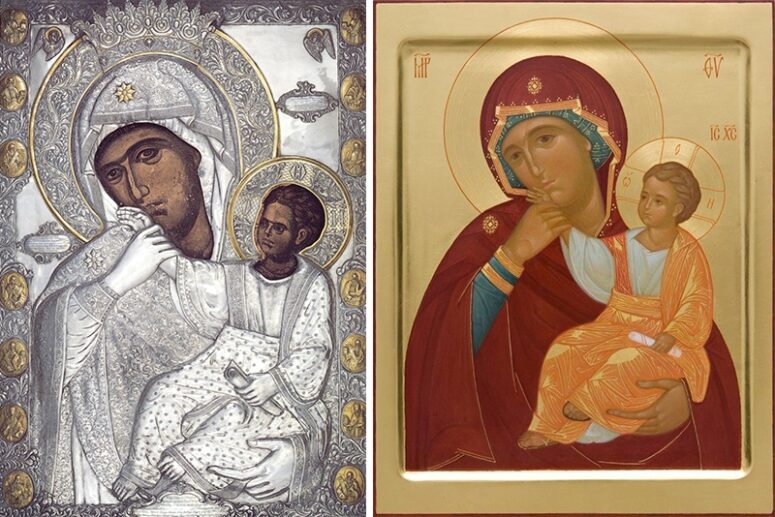
Igorevskaya icon of the Mother of God
According to Tradition, this icon became miraculous after the holy Kiev prince Igor Olgovich prayed in front of it.
After the death of the Grand Prince Vsevolod Olgovich in 1146, his brother Igor was to become the new ruler of Kiev. However, the people of Kiev wanted to see in his place the Pereyaslavl prince Izyaslav Mstislavovich. Secretly, they turned to him, and he took the Kiev throne by force, imprisoning Prince Igor in a log cabin without windows or doors.
Under such conditions of life, the deposed prince soon became very ill and unable to eat or walk. Anticipating the imminent death of the heir to the throne, the Kievan authorities released him and tonsured him into schema in the Kiev Feodorovsky Monastery with the name Ignatius . The holy prince understood that his execution was inevitable and tearfully prayed to God, the Theotokos and the saints for the salvation of his soul. In 1147, after the schemamonk had spent about a year in the monastery, the Kievans burst into the church, where he was praying before an image of the Mother of God, dragged him out and killed him. Since then, the icon, last seen by the princely martyr, acquired the name Igorevskaya, and became famous for many miracles.
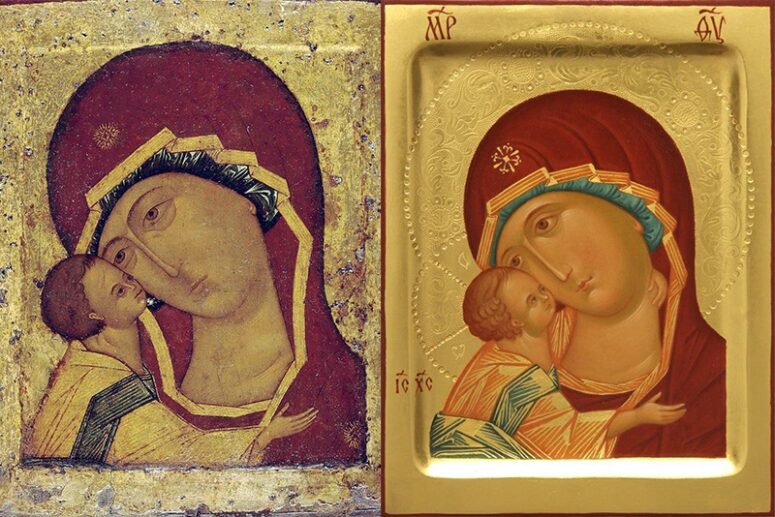
Only an ancient copy of this icon has survived to this day. The original image of the Igorevskaya icon is a shoulder length version of the Byzantine “Eleusa” (Tenderness) icon. It is noteworthy that the Illustrated Life of St Sergius of Radonezh (16th century) depicts the same shoulder length icon as the cell image of the saint. It is quite possible that the Igorevskaya icon could be a family relic of St Sergius.

Konevskaya Icon of the Mother of God
This unusual image was brought to Russian land in the 14th century. Venerable John, abbot of one of the Athonite monasteries, blessed Venerable Arsenius before laying the foundation of a new monastery dedicated to the Nativity of the Most Holy Theotokos on the island of Konevets in Lake Ladoga.
Ever since that time, Venerable Arsenius could feel the miraculous help coming from the holy icon, clearly evidenced by the following events: At that time the island of Konevets was inhabited by pagans worshipping a gigantic stone idol. Desiring to defeat this vice, St Arsenios took the image of the Theotokos, brought by him from Athos, and with fervent prayer made a procession around the stone. Immediately, the exiled demons turned into a flock of ravens, rose into the air and flew away. Since then, the pagan stone has become a symbol of the victory of Christianity over paganism, and the icon acquired its name Konevskaya.
It is sometimes referred to as the Golubitskaya Mother of God (from the Russian “golub”, meaning dove). This name is related to the iconography of the image, depicting the Infant Christ holding a dove in His hands. This symbol refers to the event of the Meeting of our Lord, when on the 40th day after the birth of Christ, the Mother of God brought two doves to the temple for sacrifice. This event reflects the continuity of the Old and New Testaments. Being the Creator of the law Himself, Christ fulfilled the law about the firstborn and the purification of His Mother (Luke 2: 22-24). Another symbolic meaning of the dove here is the Savior Himself. The string tied to the dove’s leg and his position “in the hand of the Lord” reflect the complete obedience of the Son to the will of the Father. The gaze of the Infant , turned away from His Mother and directed towards the sacrificial bird, only emphasizes the concentration of Christ on His Divine Ministry.


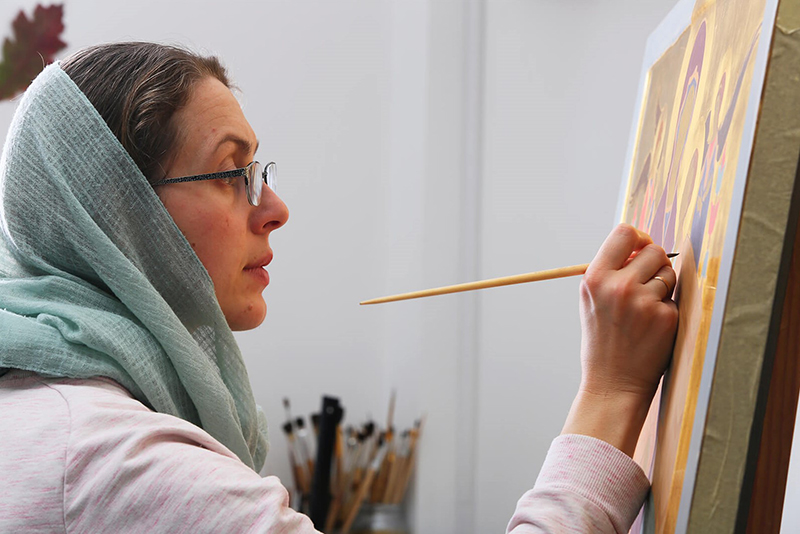
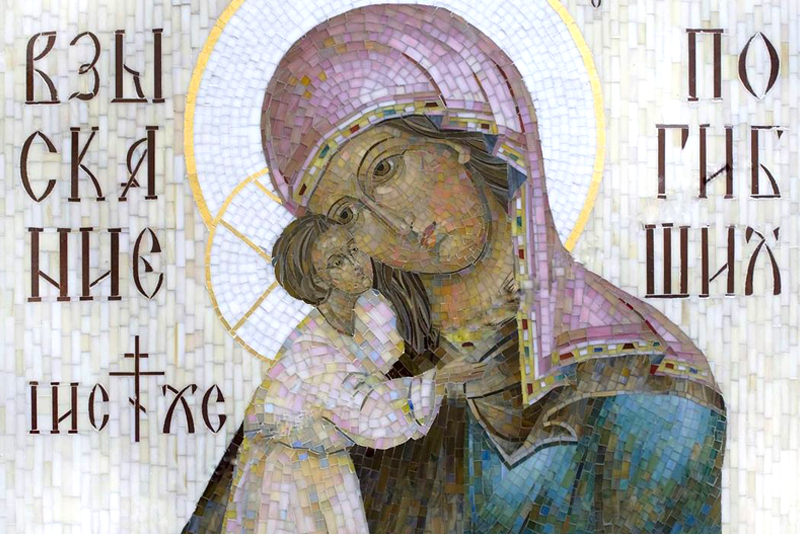

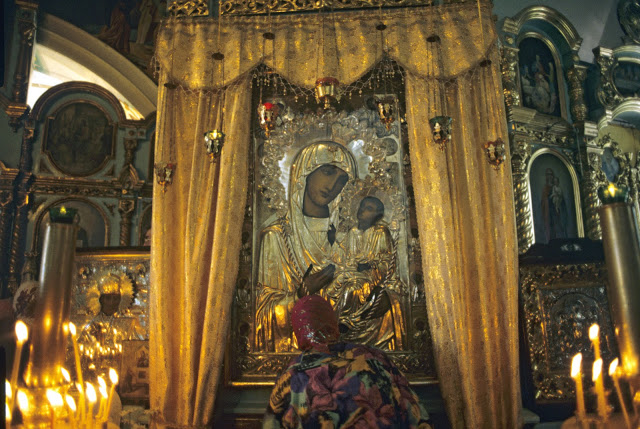
Thank you for your continued work .